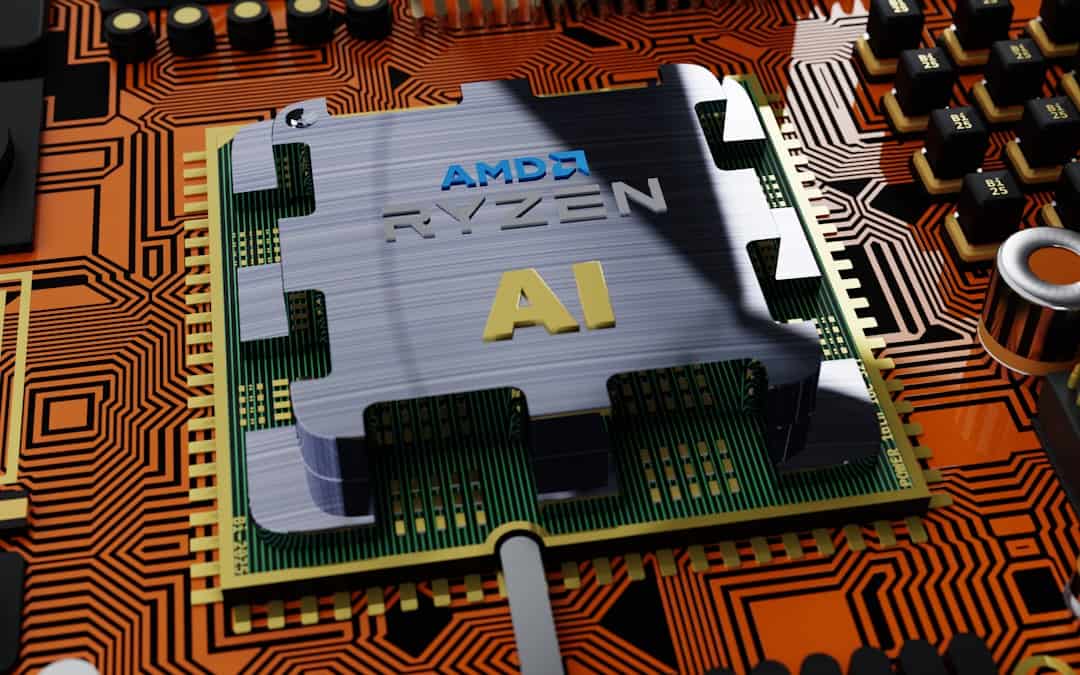Artificial Neural Networks (ANNs) are computational models inspired by the human brain’s structure and function. They consist of interconnected nodes, or “neurons,” that collaborate to process and analyze complex data. Each neuron receives input signals, processes them using a specific function, and produces an output signal.
These neurons form layers within the network, with each layer performing a distinct task in the data processing pipeline. ANNs have the ability to learn from data, making them effective tools for tasks such as pattern recognition, classification, and prediction. The learning process involves adjusting the strength of connections between neurons, known as “weights,” based on input data and desired output.
This enables ANNs to adapt and enhance their performance over time, making them valuable for solving complex problems across various domains. In recent years, ANNs have gained prominence due to advancements in computational power and the availability of large datasets. This has led to significant progress in areas such as image and speech recognition, natural language processing, and autonomous systems.
As our understanding of ANNs continues to expand, their potential to revolutionize industries and drive innovation in artificial intelligence (AI) grows.
Key Takeaways
- Artificial Neural Networks are a computational model inspired by the human brain, consisting of interconnected nodes that process and transmit information.
- Machine learning plays a crucial role in training artificial neural networks, allowing them to learn from data and improve their performance over time.
- Training and testing artificial neural networks involve feeding them with input data, adjusting the network’s parameters, and evaluating their performance on new data.
- Artificial Neural Networks have a wide range of applications in AI, including image and speech recognition, natural language processing, and autonomous vehicles.
- The advantages of artificial neural networks include their ability to learn complex patterns, while limitations include the need for large amounts of data and computational resources.
- Future developments in artificial neural networks and AI may involve more efficient training algorithms, improved network architectures, and enhanced interpretability of the models.
- Ethical considerations in artificial neural network machine learning include issues related to bias, privacy, and the potential impact on employment and society.
The Role of Machine Learning in Artificial Neural Networks
Machine learning plays a crucial role in the development and training of artificial neural networks. It is a subfield of AI that focuses on creating algorithms capable of learning from data and making predictions or decisions without explicit programming. In the context of ANNs, machine learning algorithms are used to optimize the network’s parameters, such as weights and biases, to minimize errors and improve performance.
There are several types of machine learning algorithms commonly used in training ANNs, including supervised learning, unsupervised learning, and reinforcement learning. Supervised learning involves training the network on labeled data, where the correct output is provided for each input. Unsupervised learning, on the other hand, involves training the network on unlabeled data, allowing it to discover patterns and relationships on its own.
Reinforcement learning focuses on training the network to make sequential decisions by rewarding or punishing its actions based on their outcomes. The combination of machine learning and ANNs has led to significant advancements in various fields, including computer vision, natural language processing, and robotics. By leveraging large datasets and powerful computational resources, researchers and engineers can train ANNs to perform complex tasks with high accuracy and efficiency.
As machine learning techniques continue to evolve, so too will the capabilities of ANNs in solving real-world problems.
Training and Testing Artificial Neural Networks

Training artificial neural networks involves optimizing their parameters to minimize errors and improve performance on a specific task. This process typically involves feeding the network with input data, comparing its output with the desired output, and adjusting its parameters using a technique known as backpropagation. Backpropagation involves calculating the gradient of the error with respect to each parameter and using this information to update the network’s weights and biases.
Once a neural network has been trained, it is important to evaluate its performance on unseen data to ensure that it can generalize well to new inputs. This is done through a process called testing or validation, where the network’s performance is assessed using a separate dataset that was not used during training. By testing the network on new data, researchers can gain insights into its ability to make accurate predictions and identify any potential issues such as overfitting or underfitting.
The training and testing of artificial neural networks require careful consideration of various factors, including the choice of training algorithm, network architecture, and hyperparameters. Additionally, the quality and size of the training dataset can have a significant impact on the network’s performance. As researchers continue to explore new techniques for training and testing ANNs, we can expect to see further improvements in their capabilities across different domains.
Applications of Artificial Neural Networks in AI
| Application | Description |
|---|---|
| Image Recognition | Using neural networks to identify and classify objects within images. |
| Natural Language Processing | Utilizing neural networks to understand and process human language. |
| Speech Recognition | Applying neural networks to convert spoken language into text. |
| Medical Diagnosis | Using neural networks to analyze medical data and assist in diagnosing diseases. |
| Financial Forecasting | Utilizing neural networks to predict stock prices and market trends. |
Artificial neural networks have found numerous applications in artificial intelligence across various industries. In healthcare, ANNs are used for medical image analysis, disease diagnosis, and drug discovery. They have also been employed in finance for fraud detection, risk assessment, and algorithmic trading.
In the automotive industry, ANNs are used for autonomous driving systems, vehicle diagnostics, and predictive maintenance. In addition to these applications, ANNs have also made significant contributions to fields such as marketing, cybersecurity, manufacturing, and entertainment. For example, they are used for personalized recommendations in e-commerce platforms, anomaly detection in network security, process optimization in manufacturing, and content recommendation in streaming services.
The versatility of artificial neural networks makes them well-suited for addressing complex problems in diverse domains. As our understanding of ANNs continues to advance, we can expect to see even more innovative applications that leverage their capabilities to drive progress in AI.
Advantages and Limitations of Artificial Neural Networks
Artificial neural networks offer several advantages, including their ability to learn from data, adapt to new information, and generalize well to unseen inputs. They are also capable of handling complex tasks that may be challenging for traditional algorithms, making them a valuable tool for solving real-world problems. However, ANNs also have limitations that need to be considered.
They require large amounts of data for training and can be computationally intensive, which may limit their practicality in certain applications. Additionally, they can be prone to overfitting if not properly regularized or validated, leading to reduced performance on new data. Despite these limitations, ongoing research and development efforts are focused on addressing these challenges and improving the capabilities of ANNs.
This includes exploring new architectures, training algorithms, and regularization techniques to enhance their performance and efficiency.
Future Developments in Artificial Neural Networks and AI

The future of artificial neural networks holds great promise for further advancements in AI. Researchers are exploring new architectures such as convolutional neural networks (CNNs) for image processing and recurrent neural networks (RNNs) for sequential data analysis. Additionally, there is growing interest in developing more efficient training algorithms and hardware accelerators to support the training and deployment of large-scale ANNs.
As AI continues to evolve, we can expect to see increased integration of ANNs with other technologies such as reinforcement learning, natural language processing, and robotics. This will enable the development of more sophisticated AI systems capable of performing complex tasks with human-like intelligence. Furthermore, advancements in explainable AI (XAI) are expected to enhance our understanding of how ANNs make decisions and improve their transparency and interpretability.
This will be crucial for building trust in AI systems and ensuring their ethical use across different applications.
Ethical Considerations in Artificial Neural Network Machine Learning
As artificial neural networks become more prevalent in AI applications, it is important to consider the ethical implications of their use. This includes addressing issues such as bias in training data, transparency in decision-making processes, and accountability for the outcomes of AI systems. Bias in training data can lead to unfair or discriminatory outcomes when using ANNs for tasks such as hiring decisions or loan approvals.
It is essential to carefully curate training datasets and implement measures to mitigate bias in order to ensure that AI systems are fair and equitable. Transparency in decision-making is another important ethical consideration when using ANNs. As these systems become more complex and sophisticated, it can be challenging to understand how they arrive at their decisions.
Efforts to develop explainable AI techniques will be crucial for ensuring that AI systems can be trusted and understood by users. Finally, accountability for the outcomes of AI systems is essential for ensuring responsible use of ANNs in various applications. This includes establishing clear guidelines for how AI systems should be used and ensuring that there are mechanisms in place to address any unintended consequences or ethical dilemmas that may arise.
In conclusion, artificial neural networks have become a cornerstone of modern AI systems due to their ability to learn from data and perform complex tasks. As research in this field continues to advance, we can expect to see even more innovative applications that leverage the capabilities of ANNs to drive progress in AI across various industries. However, it is crucial to consider the ethical implications of using ANNs and ensure that they are developed and deployed responsibly to benefit society as a whole.
Artificial neural network machine learning has been a hot topic in the tech world, with many companies and researchers exploring its potential applications. One related article that caught my eye is “Challenges and Opportunities in the Regulatory Landscape” which discusses the legal and ethical considerations surrounding the use of artificial intelligence in various industries. It’s an important read for anyone interested in the future of AI and its impact on society. (source)
FAQs
What is an artificial neural network (ANN) in machine learning?
An artificial neural network (ANN) is a computational model inspired by the structure and function of the human brain. It is composed of interconnected nodes, or “neurons,” that work together to process and analyze complex data.
How does an artificial neural network learn in machine learning?
Artificial neural networks learn through a process called training, where they are exposed to large amounts of labeled data. During training, the network adjusts the strength of connections between neurons to minimize errors and improve its ability to make accurate predictions.
What are the different types of artificial neural networks used in machine learning?
There are several types of artificial neural networks, including feedforward neural networks, recurrent neural networks, convolutional neural networks, and more. Each type is designed to handle specific types of data and tasks, such as image recognition, natural language processing, and time series analysis.
What are the applications of artificial neural networks in machine learning?
Artificial neural networks are used in a wide range of applications, including image and speech recognition, medical diagnosis, financial forecasting, autonomous vehicles, and more. They are particularly effective in tasks that involve pattern recognition and complex data analysis.
What are the advantages of using artificial neural networks in machine learning?
Some advantages of using artificial neural networks include their ability to learn from large and complex datasets, their adaptability to different types of data, and their capability to make accurate predictions and classifications in real-time. They are also capable of handling non-linear relationships in data.











Leave a Reply